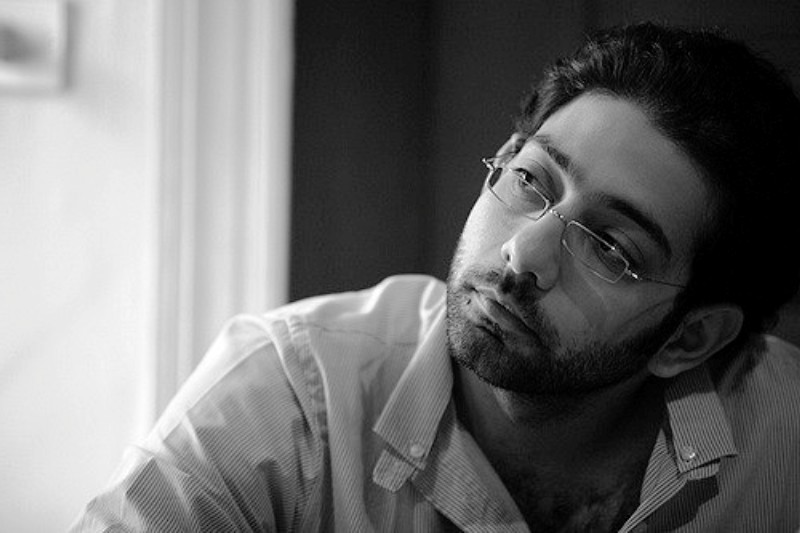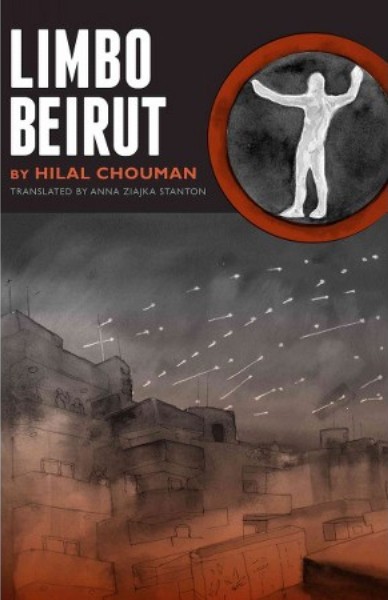Hybrid lives

″Limbo Beirut″ is mostly set in Beirut in May 2008, when Hezbollah and Sunni fighters clashed in the streets – a frightening after-echo of Lebanon′s fifteen-year civil war.
Yet this novel is not about warfare. As Stanton said in a three-city Skype conversation, ″Limbo Beirut″ is a demand that the reader ″balance in the uneasy space between being a voyeur and a participant, gratifying our desire to get inside the head of that stranger we meet on the street…but on the other hand surprising us with the fact that you can never just be a witness, that you′re always going to somehow become involved in the other′s life, whether you mean to or not.″
As the book unfolds, each of the five stories bumps up against the others. They affect each other in large and small ways, some of which don′t become clear until the final pages.
The first section, illustrated by Fadi Adleh, centres on Walid and his lover Alfred. Here, the street clashes don′t drive the action. Instead, it centres on the accommodations that Walid and Alfred make to the larger society. ″Limbo Beirut″ thus joins a growing number of Arabic novels in which gay men are portrayed as sympathetic, ordinary people, as in Muhammad Abdelnaby′s ″In the Spider′s Room″, or in the background of Iman Humaydan′s ″Other Lives″, translated by Michelle Hartman.
Chouman emphasised, in a conversation over Skype, that he doesn′t write issue-driven or taboo-breaking books. He′s against approaching gay characters ″in a bubble, expressing a world which is not integrated with other worlds.″ Instead, he wants to ″integrate these characters within the usual landscape or platform.″ Chouman, who currently lives in Dubai, added that he′s now writing a novel with gay characters at the centre, ″and I′m trying to just understand the characters, linking it to how homosexuality plays out in Lebanese society, how sometimes Lebanese society treats homosexuals as outsiders.″
″It′s more interesting to me to weave these characters into the usual storytelling rather than to express them in a standalone, isolated approach,″ Chouman said.
Striking monochrome illustrations
But the story doesn′t begin with Chouman′s prose. Before the first sentence, the reader sees an arresting black-and-white image: a man′s body with a head like a camel′s. Throughout the first chapter, images of vulnerable or anxious human bodies are woven in, as are animal faces, missile-streaked landscapes and talking heads that seem to argue past a woman′s armless body. None of these directly reflects the action. Instead, they′re a visual track that accompanies the narrative.

″If you remember Naguib Mahfouz books that have Gamal Qotb covers, where you have one illustration with a quote – that was my starting point,″ Chouman said. ″But I wanted to take it further.″ Chouman gave early drafts to each of the illustrators, who had the freedom to express or interpret their chapter as they experienced it.
The five stories are in many ways independent and Walid and Alfred disappear for a time. Indeed, Chouman originally intended to craft ″Limbo Beirut″ as a short-story collection. The idea was to have the stories in five different writing styles, in five different cities, illustrated by five different artists. Ever since Chouman was in one of Najwa Barakat′s acclaimed writing workshops, he said, ″I always try to do a sort of writing that includes some collaboration with others.″
Early on, Chouman got a grant from the Arab Foundation for Arts and Culture so that he could pay the illustrators. But then thought he should find a publisher. ″And they were like, ′No, we don′t publish short-story collections.′ ″
Instead of being discouraged, Chouman decided to re-shape his project as a novel. It was initially going to be published by Dar al-Adab, but Chouman says they were worried about the illustrations, which feature some nudity. The book was eventually published by Dar al-Tanweer and Chouman said he hasn′t experienced any censorship. In fact, he said, the book has seen steady sales. This was a surprise, Chouman said, because mid-list Arabic fiction sometimes has a hard time finding an audience.
Twin audience appeal
″One detail that played to our benefit is that we′re attracting two audiences,″ Chouman said. The first is the Arabic-literature audience, while the second is the audience for illustrations. ″There is a culture in Beirut of graphic designers and illustrators. So this was a prototype for them.″
A few critics, Chouman said, declared that ″Limbo Beirut″ was ″not a novel.″ Chouman believes this is because although there are interlinked novel hybridisations in other languages, ″it′s new in Arabic.″
The final chapter of the book is the most intimate and the only one written in the first person. This mental letter to an unseen woman takes us to a hospital, where the disparate-seeming story threads are finally brought together. Both Stanton and Chouman called that last chapter their favourite.
″I like finales,″ Chouman said. ″It′s like you′re reaching a point where everything is making sense, at the end and you get a bit anxious about it.″
The final chapter, illustrated by Mohamed Gaber, ends fittingly, with a giant pause button surrounded by Arabesque patterns. Just so, the action of the last chapter pauses, before it returns us to the first chapter and to a desire to read it all over again.
Marcia Lynx Qualey
© Qantara.de 2016